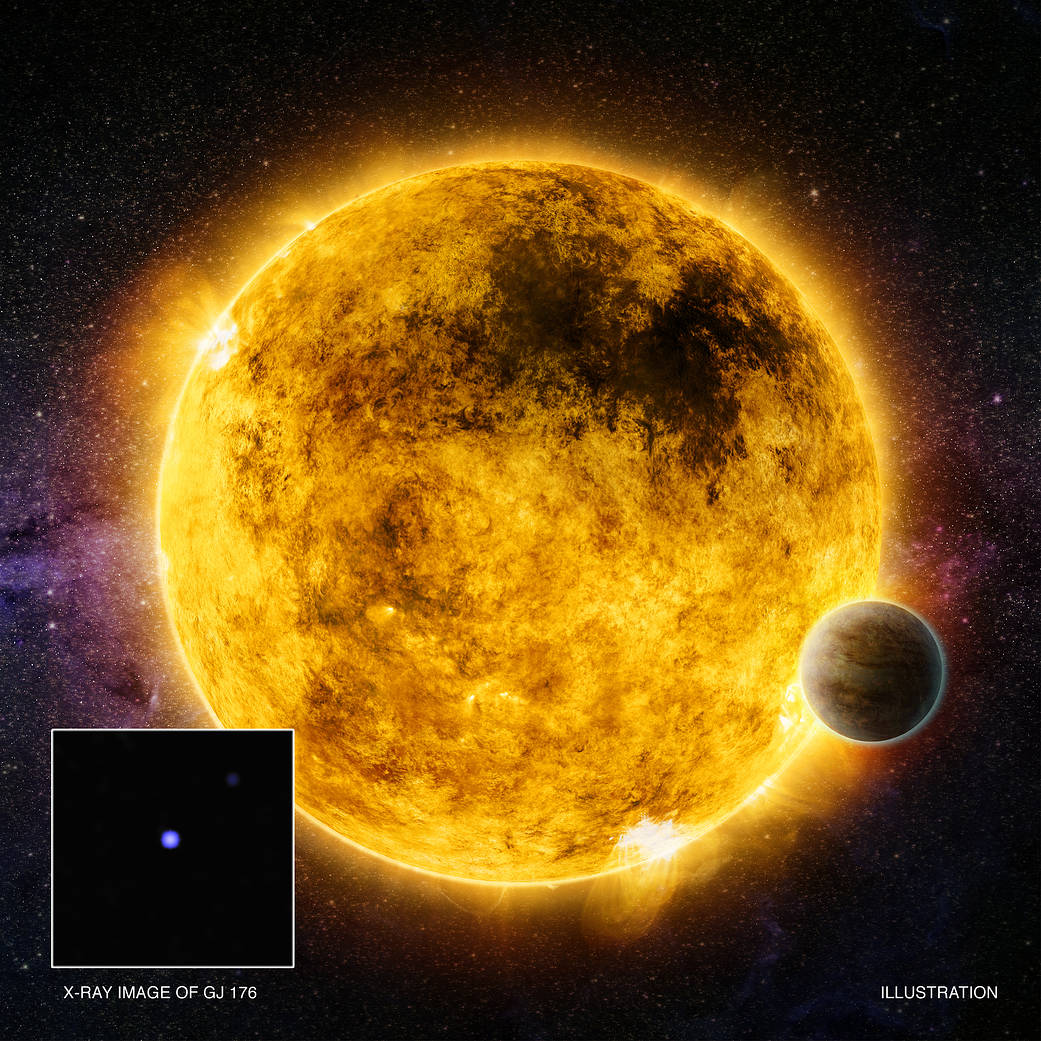A new study using data from NASA’s Chandra X-ray Observatory and ESA’s XMM-Newton suggests X-rays emitted by a planet’s host star may provide critical clues to just how hospitable a star system could be. A team of researchers looked at 24 stars similar to the Sun, each at least one billion years old, and how their X-ray brightness changed over time.
Since stellar X-rays mirror magnetic activity, X-ray observations can tell astronomers about the high-energy environment around the star. In the new study the X-ray data from Chandra and XMM-Newton revealed that stars like the Sun and their less massive cousins calm down surprisingly quickly after a turbulent youth.
This artist’s illustration depicts one of these comparatively calm older Sun-like stars with a planet in orbit around it. The inset box shows the Chandra data of one of the observed stars called GJ176-525px.
To understand how quickly stellar magnetic activity level changes over time, astronomers need accurate ages for many different stars. This is a difficult task, but new precise age estimates have recently become available from studies of the way that a star pulsates using NASA’s Kepler and ESA’s CoRoT missions. These new age estimates were used for most of the 24 stars studied here.
Astronomers have observed that most stars are very magnetically active when they are young, since the stars are rapidly rotating. As the rotating star loses energy over time, the star spins more slowly and the magnetic activity level, along with the associated X-ray emission, drops.
Although it is not certain why older stars settle down relatively quickly, astronomers have ideas they are exploring. One possibility is that the decrease in rate of spin of the older stars occurs more quickly than the younger stars. Another possibility is that the X-ray brightness declines more quickly with time for older, more slowly rotating stars than it does for younger stars.
Image credit: X-ray: NASA/CXC/Queens Univ. of Belfast/R. Booth, et al.; Illustration: NASA/CXC/M. Weiss
Read More from NASA’s Chandra X-ray Observatory.
For more Chandra images, multimedia and related materials, visit:



























